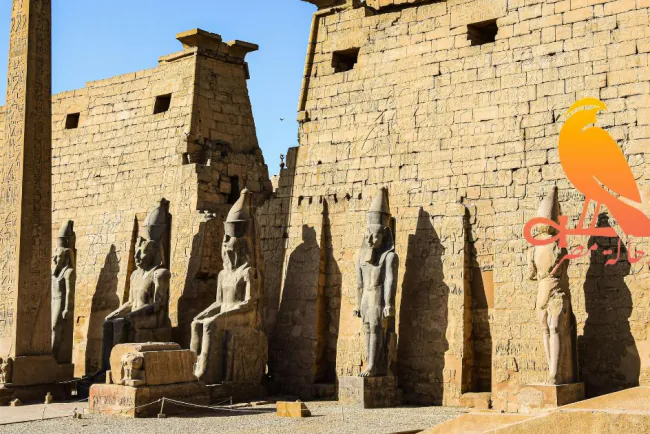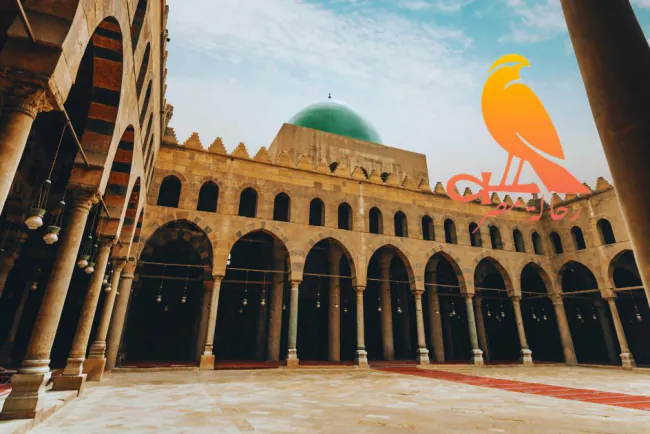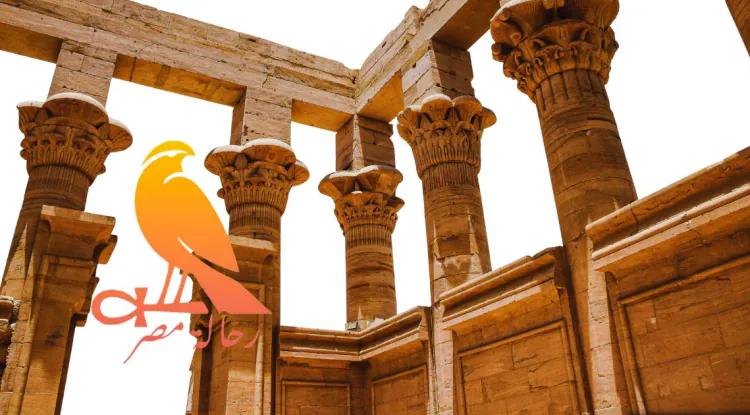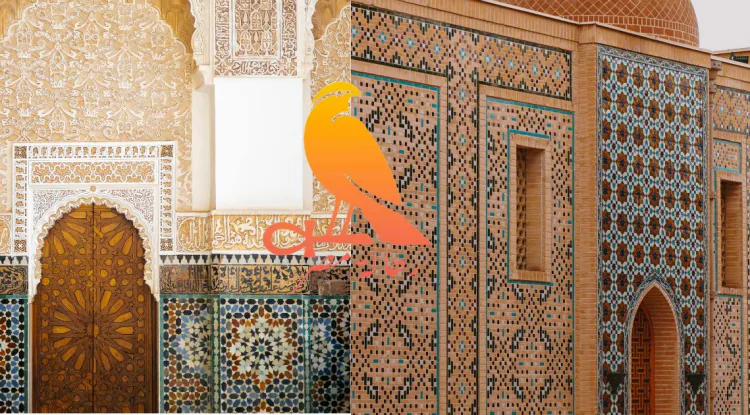Colors and their symbolism in ancient Egypt
Colors play an important role in our daily lives; they are a means by which people express their emotions, such as joy, sadness, or anger. In ancient civilizations, colors were also used as a way to express religious, social, and environmental beliefs and symbols.
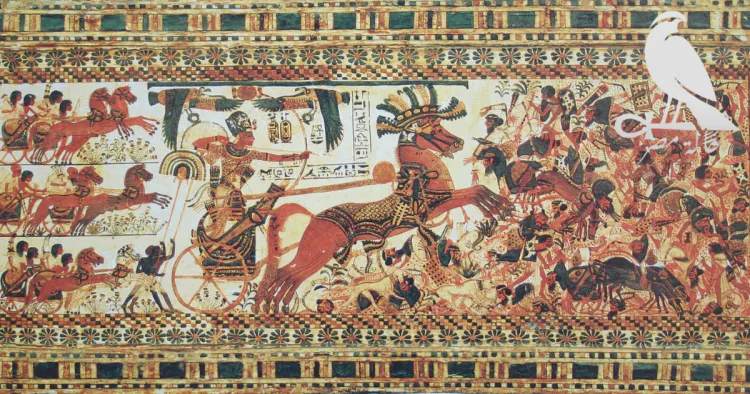
In ancient Egypt, the symbolism of colors was extremely important and remained consistent throughout history, being passed down from generation to generation and from one artist to another. No color was chosen arbitrarily; each color had its own specific meaning and symbolism. Understanding the symbolism of these colors is essential to help unravel the mysteries of ancient Egyptian beliefs in particular, and ancient Egyptian civilization in general.
the symbolism of colors in ancient Egypt:
Those who study the art of ancient Egypt will find that the wall paintings in tombs, temples, and other Egyptian artifacts in museums around the world still retain their vibrant colors, demonstrating the skill and aesthetic sense of the artists, who experimented with various color combinations. The Egyptians used six basic colors in their artwork: white, black, red, yellow, green, and blue. These colors were produced using mineral pigments, such as iron oxide for red, copper oxide for blue, gypsum for white, and charcoal for black. Plant resins or egg white were added to these pigments to enhance their binding properties, which explains why the colors have survived to this day. The fact that some tombs were sealed tightly, preventing robbers from entering, also contributed to the preservation of the colors, as the dry, warm air inside protected them. The ancient Egyptians didn't stop at these basic colors; they mixed pigments to create intermediate shades.
The use of color in their art evolved continuously over time. During the Old Kingdom, Egyptian artists used only five colors: red, yellow, white, brown, and blue. In the Middle Kingdom, they added other colors, such as green. During the New Kingdom, lighter, more delicate colors became common, along with shading techniques. By the Roman period, artists had developed the technique of painting with wax-based paints, which allowed for a much wider range of colors than powdered pigments.
Regarding colors and their symbolism:
The color white:
The color white was known in ancient Egypt since predynastic times. It is one of the most important ancient colors and held great significance for the ancient Egyptians. It symbolized purity and holiness, and linen garments, which were worn by high priests and religious figures, were dyed white. It was also used for eye makeup, and in the late 18th Dynasty, for painting the backgrounds of scenes. It was also used to decorate pottery. It was the color of silver, marble, the skin of Nefertum, the clothing of the gods, and the crown of Upper Egypt. Artists were able to obtain different shades of white, and it was also used to lighten other colors. It was prepared from quicklime (calcium carbonate) or gypsum (calcium sulfate) or lead white (lead carbonate), and it occurs naturally as the mineral cerussite.
The color black:
The ancient Egyptians used black to represent night, death, and the afterlife, and therefore it was frequently used in funerary rituals. It was the color of Osiris and Anubis' skin, and the color of funerary statues. The ancient Egyptians also used black to express the idea of renewal and fertility, referring to the black soil of Egypt, which is why Egypt was called "Kemet," meaning "the black land," referring to the fertile soil that was renewed by the annual Nile flood. It was also used as a primary color for dyeing women's hair and wigs, and as eyeliner for decoration. The main mineral component of this color is carbon, which occurs in several forms, including soot, collected from cooking surfaces, and charcoal, mixed with animal glue, which is less pure than soot.
The Color Blue:
The color blue was known in ancient Egypt and was used in paintings to represent the blue waters of the Nile. It was also used to color ceilings to symbolize the clear sky. It represented life and rebirth, associated with the annual Nile flood, and therefore with fertility and the cultivation of Egyptian land. It was the color of the Nile god Hapy and the skin color of the god Amun. There were several sources for obtaining this color, including azurite (copper carbonate), one of the oldest sources of blue pigment. Azurite occurs naturally in Sinai and the Eastern Desert. Egyptian blue, however, was not a naturally occurring color; it was manufactured because azurite was scarce in Egypt. An example of artwork painted with this color is the palette of Narmer (Dynasty 1). This pigment demonstrates the advanced level of ancient Egyptian pigment production; it is composed of copper and calcium silicates.
The Color Green:
This color held special significance for the ancient Egyptians, symbolizing nature, as it was used to depict trees, plants, and flowers. It represented growth, fertility, youth, and vitality, and was associated with the gods Osiris, Wadjet, and Hathor. This color was derived from the mineral malachite (copper carbonate), which is found in the Sinai Peninsula, the Eastern Desert, and various parts of the Western Desert. This color has been used since predynastic times.
The Color Red:
It is one of the primary colors used in ancient Egyptian art, dating back to prehistoric times. It was the royal color, symbolizing victory, power, and wrath, due to its association with blood and fire. It was the color of the crown of Lower Egypt. It was used in inscriptions on walls and papyrus scrolls, particularly at the beginning of chapters and paragraphs, and for words denoting evil or danger.
The color yellow:
This color was used since the predynastic period, and its use increased, reaching its peak during the New Kingdom and Saite periods. It was the color of the sun and gold, and a symbol of immortality. It had several sources, including yellow ochre, one of the most common sources for this color. This mineral occurs naturally in sandstone formations in the Western Desert, particularly in the iron mines of the Bahariya Oasis, and is also found in many rocks in the Eastern Desert. Another source was orpiment, used starting from the Eighteenth Dynasty, and referred to as royal yellow or golden yellow. A jar containing this pigment was found in the tomb of King Tutankhamun.
Purity of color was essential in ancient Egypt. Artists had to finish painting areas of a single color before moving on to another. It seems that a layer of a specific substance was applied to add sheen and protect the colors. For painting, a coarse brush was used, made from bundles of palm fibers, twisted together at one end to form a handle. Alternatively, pieces of fibrous wood, chewed or flattened at one end, were used. At the end of the painting process, the outlines and finer details were redrawn using narrow reed brushes, similar to those used by scribes.
What's Your Reaction?








